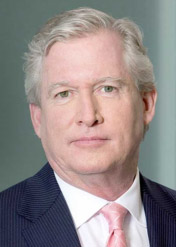Point Beach nuclear power plant.
The Nuclear Regulatory Commission has issued for public comment a draft environmental impact statement on NextEra Energy’s application for the subsequent license renewal of its Point Beach reactors, located in Two Rivers, Wis. Subsequent license renewal allows a reactor to operate for 20 years beyond the expiration of its original license renewal.
Framatome’s PROtect accident tolerant fuel assembly undergoes final inspection before delivery to Exelon’s Calvert Cliffs-2 in Lusby, Md.
The nuclear industry’s first 100 percent accident tolerant fuel assembly is in operation at Exelon Generation’s Calvert Cliffs plant, the Department of Energy announced yesterday. The advanced fuel will operate in the reactor for the next four to six years and will be routinely inspected to monitor its performance, the DOE said.
Located in Lusby, Md., Calvert Cliffs houses two pressurized water reactors. Unit 1 is rated at 907 Mwe, and Unit 2 at 881 Mwe.
More than 550 employees will join Framatome as part of its acquisition of Rolls-Royce’s I&C business. (Photo: Business Wire)
French nuclear reactor company Framatome has completed its purchase of Rolls-Royce Civil Nuclear Instrumentation and Control. Framatome announced in December 2020 that it had agreed to acquire Rolls-Royce’s I&C business, which has operations in France, the Czech Republic, and China.
According to Framatome, the transaction builds on the company’s engineering expertise, enlarges its industrial footprint, and expands its global I&C systems development and deployment capabilities.
Southern California Edison has a plan—and it just might build momentum to solve the nation’s spent nuclear fuel disposal dilemma.
Imagine it’s January 1998. A specially equipped train from the Department of Energy rolls up to the San Onofre Nuclear Generating Station (SONGS) to pick up spent nuclear fuel and take it to the Yucca Mountain repository in Nevada. This scene is repeated thousands of times at nuclear plant sites across the U.S. over the ensuing decades. The solution to permanent spent fuel disposal as outlined in the Nuclear Waste Policy Act (and its amendments) is working as intended. The nation’s commercial spent fuel is safely isolated deep underground for the long term.
But that is not what happened. Work on Yucca Mountain has been stalled for a full decade, and the organization within the DOE that by law is responsible for managing the spent fuel program has been defunded and disbanded.
The Barakah nuclear power plant. Unit 3 is the second from left. (Photo: Emirates Nuclear Energy Corporation)
The construction of Unit 3 at the United Arab Emirates’ Barakah nuclear power plant has been completed, the Emirates Nuclear Energy Corporation (ENEC) announced yesterday on the sidelines of COP26, the high-profile climate confab taking place in Scotland this week and next.
According to ENEC’s announcement, Barakah-3 will now undergo operational readiness activities and is on track to start up in 2023.
From left, Shannon Bragg-Sitton, Paul Chodak, and Michael J. Guastella appear before the Senate Committee on Energy and Natural Resources on November 4.
As Congress awaited key votes yesterday on spending bills that include production tax credits for at-risk plants and a new amendment adding $500 million in supplemental funding over five years to increase the availability of high-assay low-enriched uranium (HALEU), the U.S. Senate Energy and Natural Resources Committee held a Full Committee Hearing On Potential Non-Electric Applications Of Civilian Nuclear Energy. Sen. Joe Manchin (D., W.V.), chairman of the committee, emphasized that “advanced nuclear reactors hold enormous potential to provide opportunity to communities across the country with zero-emission baseload power” and made it clear he expects new reactors to replace retiring coal plants in his home state of West Virginia.
Speaking before the committee were Shannon Bragg-Sitton of Idaho National Laboratory, Paul Chodak III of American Electric Power, and Michael J. Guastella of the Council of Radionuclides and Radiopharmaceuticals.
Artist rendering of a NuScale SMR plant.
On the sidelines of the COP26 Conference in Glasgow yesterday, John Kerry, the Biden’s administration’s special presidential envoy for climate, joined Romanian president Klaus Iohannis to announce plans to build a first-of-a-kind small modular reactor plant in Romania. The SMR technology is to be provided by NuScale Power, based in Portland, Ore.
 A new study by researchers from Stanford University and the Massachusetts Institute of Technology—An Assessment of the Diablo Canyon Nuclear Plant for Zero-Carbon Electricity, Desalination, and Hydrogen Production—makes a compelling case that the 2018 decision to shut down California’s only operating nuclear power plants needs another look—and that revenue options could make reversing the decision not just feasible but economically attractive.
A new study by researchers from Stanford University and the Massachusetts Institute of Technology—An Assessment of the Diablo Canyon Nuclear Plant for Zero-Carbon Electricity, Desalination, and Hydrogen Production—makes a compelling case that the 2018 decision to shut down California’s only operating nuclear power plants needs another look—and that revenue options could make reversing the decision not just feasible but economically attractive.




















 “The price of anti-nuclear psychosis (for that is what it is) will be paid by vulnerable countries and future generations who suffer the escalating damages of climate breakdown,” writes environmentalist and author Mark Lynas in the foreword to a new study,
“The price of anti-nuclear psychosis (for that is what it is) will be paid by vulnerable countries and future generations who suffer the escalating damages of climate breakdown,” writes environmentalist and author Mark Lynas in the foreword to a new study,